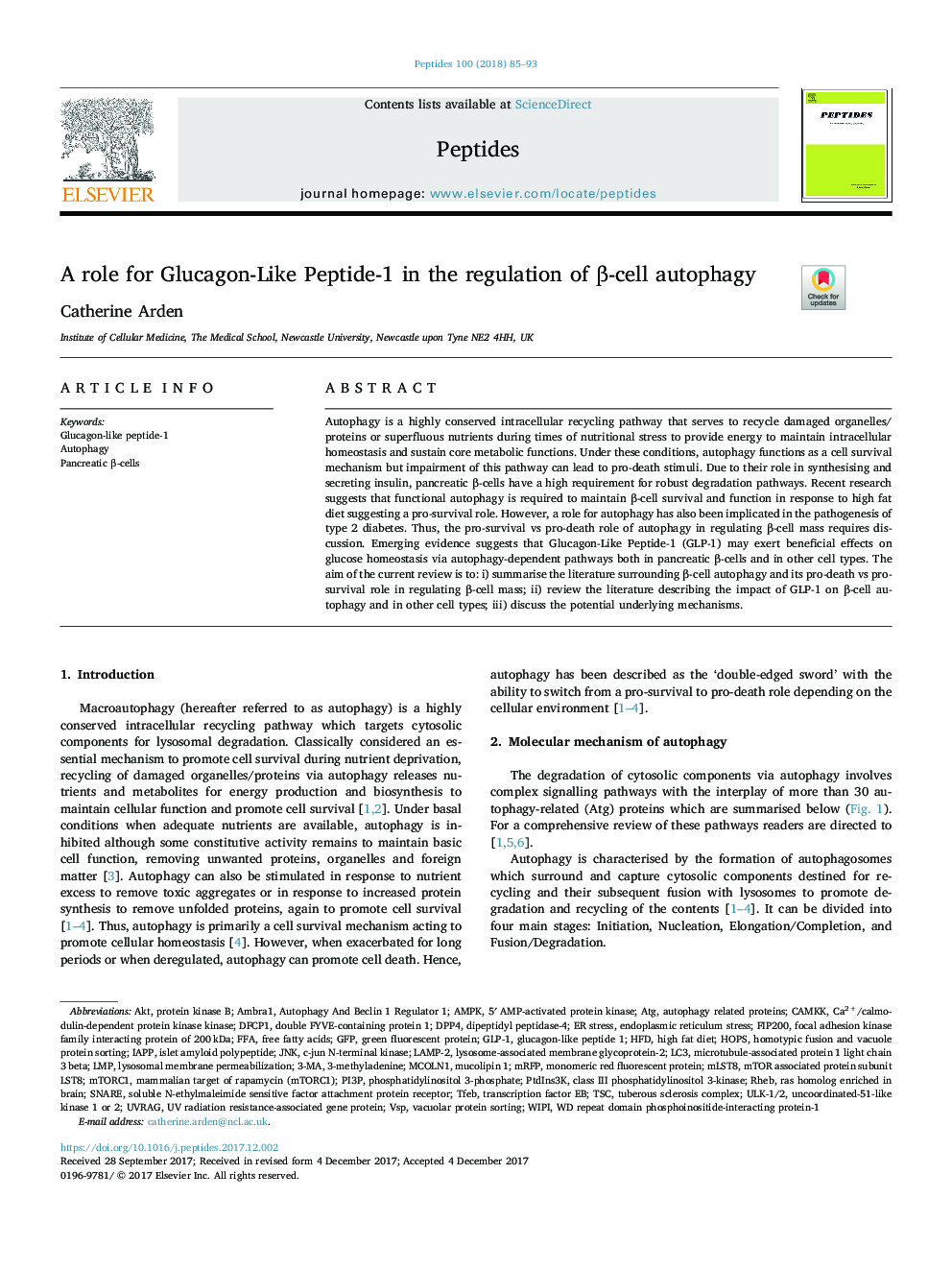| Article ID | Journal | Published Year | Pages | File Type |
|---|---|---|---|---|
| 8347456 | Peptides | 2018 | 9 Pages |
Abstract
Autophagy is a highly conserved intracellular recycling pathway that serves to recycle damaged organelles/proteins or superfluous nutrients during times of nutritional stress to provide energy to maintain intracellular homeostasis and sustain core metabolic functions. Under these conditions, autophagy functions as a cell survival mechanism but impairment of this pathway can lead to pro-death stimuli. Due to their role in synthesising and secreting insulin, pancreatic β-cells have a high requirement for robust degradation pathways. Recent research suggests that functional autophagy is required to maintain β-cell survival and function in response to high fat diet suggesting a pro-survival role. However, a role for autophagy has also been implicated in the pathogenesis of type 2 diabetes. Thus, the pro-survival vs pro-death role of autophagy in regulating β-cell mass requires discussion. Emerging evidence suggests that Glucagon-Like Peptide-1 (GLP-1) may exert beneficial effects on glucose homeostasis via autophagy-dependent pathways both in pancreatic β-cells and in other cell types. The aim of the current review is to: i) summarise the literature surrounding β-cell autophagy and its pro-death vs pro-survival role in regulating β-cell mass; ii) review the literature describing the impact of GLP-1 on β-cell autophagy and in other cell types; iii) discuss the potential underlying mechanisms.
Keywords
soluble N-ethylmaleimide sensitive factor attachment protein receptorLC33-MAmRFPmTORC1DPP4AMPKIAPPTFEBMCOLN1FIP200CaMKKPI3PRHEBUVRAGWIPIDfcp1double FYVE-containing protein 1Ambra1mLST8Ca2+/calmodulin-dependent protein kinase kinasePtdIns3KATGJnkGFPFFATSCHFDLMPSNAREGLP-13-methyladenine5′ AMP-activated protein kinasec-Jun N-terminal kinaseLysosomal membrane permeabilizationVspPancreatic β-cellsAktAutophagyER stressEndoplasmic reticulum stressFree fatty acidsDipeptidyl peptidase-4Ras homolog enriched in brainHigh fat dietTranscription factor EBphosphatidylinositol 3-phosphateLAMP-2Vacuolar protein sortingHopshomotypic fusion and vacuole protein sortinggreen fluorescent proteinmonomeric red fluorescent proteinmicrotubule-associated protein 1 light chain 3 betaprotein kinase BIslet amyloid polypeptideglucagon-like peptide-1glucagon-like peptide 1class III phosphatidylinositol 3-kinaseTuberous sclerosis complex
Related Topics
Life Sciences
Biochemistry, Genetics and Molecular Biology
Biochemistry
Authors
Catherine Arden,
